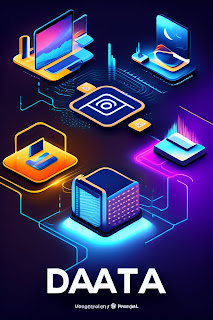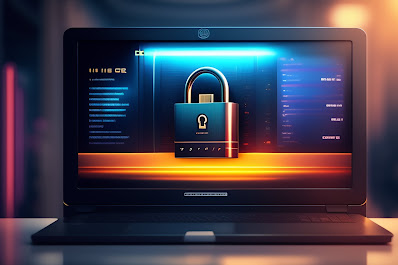Introduction
In the ever-evolving digital landscape, the Internet of Things (IoT) has emerged as a groundbreaking technology, connecting devices, objects, and systems over the internet. At its core, IoT represents a network of interconnected devices that seamlessly communicate and exchange data, bringing about unprecedented possibilities for innovation and efficiency across industries. In this comprehensive article, we delve into the intricacies of IoT, its transformative impact, and the immense potential it holds for businesses and individuals alike.
Understanding IoT: Unleashing the Power of Connectivity
At its essence, IoT encompasses a vast ecosystem of devices, ranging from everyday objects to complex industrial systems, all equipped with sensors, actuators, and connectivity capabilities. These devices collect and transmit data, enabling them to interact and collaborate with each other, humans, and even cloud-based applications. Through this seamless integration, IoT revolutionizes how we interact with our surroundings and the digital realm, opening doors to unprecedented convenience, automation, and intelligent decision-making.
Key Components of IoT
To better comprehend the inner workings of IoT, it is crucial to familiarize ourselves with its key components:
1. Devices and Sensors
At the heart of IoT lies a multitude of devices and sensors that capture, measure, and monitor various data points. These devices can range from simple sensors embedded in household appliances to advanced monitoring systems deployed in industrial settings. By collecting real-time data, these devices play a pivotal role in creating a wealth of information that can be analyzed and acted upon.
2. Connectivity
Connectivity serves as the lifeblood of IoT, facilitating seamless communication between devices, systems, and users. This connectivity can be achieved through a variety of technologies, including Wi-Fi, Bluetooth, cellular networks, and more recently, low-power wide-area networks (LPWAN). By establishing reliable and secure connections, IoT ensures uninterrupted data transfer and enables remote access and control of devices.
3. Data Analytics and Cloud Computing
The copious amounts of data generated by IoT devices hold immense value, but extracting meaningful insights from this data can be a complex task. This is where data analytics and cloud computing come into play. Advanced analytics techniques, such as machine learning and artificial intelligence, coupled with the power of cloud computing, enable the processing, storage, and analysis of massive data sets, leading to valuable insights and actionable intelligence.
4. Security and Privacy
As IoT proliferates across industries and our daily lives, ensuring robust security and safeguarding privacy becomes paramount. With interconnected devices communicating sensitive information, effective security measures are necessary to prevent unauthorized access, data breaches, and malicious activities. Encrypted communications, authentication protocols, and robust data governance frameworks are some of the essential components in building secure and trustworthy IoT ecosystems.
Transforming Industries with IoT
IoT's far-reaching impact extends across a multitude of industries, disrupting traditional paradigms and paving the way for unprecedented innovation. Let's explore a few prominent sectors where IoT is driving transformative change:
1. Healthcare
In the healthcare domain, IoT is revolutionizing patient care, monitoring, and diagnostics. Connected medical devices and wearables enable real-time health tracking, allowing healthcare professionals to provide proactive and personalized treatments. Furthermore, IoT facilitates remote patient monitoring, reducing hospital visits, and enabling early detection of health issues.
2. Manufacturing
IoT's integration with manufacturing processes has given rise to the concept of Industry 4.0, where smart factories leverage interconnected devices to optimize production, improve operational efficiency, and reduce downtime. With IoT-enabled sensors, manufacturers can monitor equipment health, track inventory in real-time, and implement predictive maintenance, leading to significant cost savings and streamlined operations.
3. Transportation and Logistics
In the realm of transportation and logistics, IoT has ushered in a new era of efficiency and safety. Connected vehicles, equipped with sensors and GPS, provide real-time fleet tracking, route optimization, and fuel consumption monitoring. Supply chain management has also been revolutionized, with IoT-powered systems enabling end-to-end visibility, inventory optimization, and seamless coordination across the entire supply chain.
4. Smart Cities
The concept of smart cities is intricately tied to IoT, as it seeks to leverage technology to enhance the quality of life for urban dwellers. IoT-enabled infrastructure, such as intelligent transportation systems, smart energy grids, and waste management systems, enables better resource allocation, reduced environmental impact, and improved citizen services. By optimizing operations and enhancing sustainability, IoT empowers cities to become more livable, sustainable, and connected.
The Future of IoT: Expanding Horizons
As IoT continues to evolve and mature, its potential for innovation and disruption appears boundless. Here are some key areas where IoT is poised to make a significant impact in the future:
1. Edge Computing and Real-time Analytics
Edge computing, a paradigm that involves processing data closer to its source, holds tremendous promise for IoT. By leveraging the computational power of edge devices, IoT systems can perform real-time analytics, enabling faster response times, reduced network latency, and enhanced data privacy. This distributed architecture is particularly beneficial in scenarios where low latency and immediate insights are critical, such as autonomous vehicles and industrial automation.
2. Artificial Intelligence and Machine Learning
The marriage of IoT and artificial intelligence (AI) presents a wealth of opportunities. By integrating AI algorithms with IoT devices, systems can become more intelligent, adaptive, and capable of autonomous decision-making. Machine learning algorithms can analyze vast amounts of data, detect patterns, and uncover actionable insights, driving efficiency, personalization, and predictive capabilities across industries.
3. 5G and IoT
The advent of 5G technology promises to catapult IoT to new heights. With its blazing-fast speeds, ultra-low latency, and massive device connectivity, 5G networks offer unparalleled opportunities for IoT deployments. From smart cities to autonomous vehicles, 5G enables high-bandwidth, low-latency communications, unlocking new use cases and empowering the next wave of IoT innovation.
Conclusion
The Internet of Things (IoT) has emerged as a transformative force, revolutionizing the way we interact with the digital world and redefining industries across the board. Through the interconnectivity of devices, seamless data exchange, and intelligent insights, IoT holds immense potential to drive innovation, efficiency, and sustainability. By harnessing the power of IoT, businesses and individuals can unlock new opportunities, optimize operations, and shape a future where technology seamlessly integrates into our lives, bringing about a smarter, more connected world.










